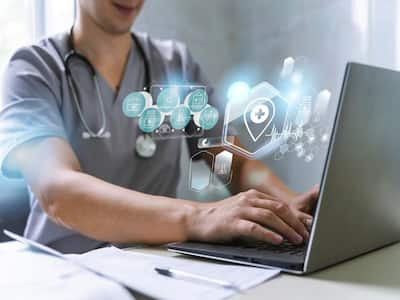
Internet of Things (IoT), which has been rapidly transforming several industries, and the healthcare industry is no exception.
Traditionally, the mode of communication between a patient and a doctor has been physical visits or, at times, via telephone. However, with the advent of technology and digitisation, various communication modes like video consultations and automatic data collection have become possible, making interactions smooth and seamless. One such technology is the Internet of Things (IoT), which has been rapidly transforming several industries, and the healthcare industry is no exception.
Before delving deeper into how IoT is transforming the healthcare sector, let’s first understand what IoT is. IoT refers to the network of interconnected devices, appliances, and other physical objects that are embedded with sensors, software, and network connectivity, allowing them to collect and exchange data. IoT uses the capabilities of artificial intelligence (AI) and offers advanced solutions.
Uses of IoT in healthcare sector
In the healthcare sector, IoT is contributing in several ways, resulting in affordable treatments in less time. For instance, the data captured by IoT-enabled healthcare devices are used for better research and evidence in treating a patient, starting from monitoring patient health to treatment, along with improving the operational efficiency of hospitals and allowing for more personalised and efficient care. It has made it easier for doctors to continuously monitor patients’ health and symptoms without conducting any kind of tests.
Moreover, IoT devices have enabled healthcare providers to remotely monitor patients’ health conditions in real-time, improving patient outcomes, and lowering healthcare costs. IoT healthcare devices like wearables and biosensors help track a patient’s vital signs, such as heart rate, blood pressure, and glucose levels, and send that data to healthcare providers for analysis. The collected data helps healthcare providers make more informed decisions and adjust treatment plans accordingly.
Then, IoT generates vast amounts of data which can be used to analyse and identify trends and patterns to treat various diseases. Here, big data analytics can help the healthcare sector identify risk factors for various diseases, track the spread of diseases, and develop personalised treatment plans for patients. IoT devices can further help healthcare providers identify patients who are at risk of developing certain conditions or complications through predictive analysis. For example, an IoT device that tracks a patient’s heart rate and blood pressure can help identify patients who are at risk of developing hypertension or heart disease. Healthcare providers can then intervene early and provide appropriate treatment to prevent the condition from developing.
READ RELATED: Aldi Is Lowering Prices on Hundreds of Products—Here's Which Items Are Getting Cheaper
IoT also effectively handles medication management, which is essential for patients with chronic conditions who require frequent medication changes. IoT healthcare devices can remind patients to take their medication at the correct time and dosage through smart pill bottles and medication dispensers. These devices also help improve the patient experience by providing personalised care. For instance, wearables can track a patient’s activity levels, sleep patterns, and stress levels. Healthcare providers can use this data to provide personalised treatment plans and recommendations that are tailored to the patient’s individual needs.
Apart from patient care, there is another important aspect of the healthcare sector, which is healthcare operations. IoT devices help streamline healthcare operations, reducing costs and improving efficiency. For instance, IoT devices can track the location of medical equipment and supplies, helping healthcare providers locate them quickly and easily when needed. Such devices can further automate routine tasks like patient check-in, reducing wait times for patients.
More innovative IoT applicationsto come up
Lastly, with all the contributions IoT brings along, it is indeed a gamechanger in the healthcare industry, providing healthcare providers with real-time data to help improve patient outcomes, reduce healthcare costs, and enhance the patient experience. As IoT technology continues to advance, we can expect to see even more innovative applications in healthcare that will help improve the lives of patients around the world.
The article is authored by Ms. Pritika Singh, CEO Prayag Hospitals Group.
Total Wellness is now just a click away.
Follow us on
window.addEventListener(‘load’, (event) => {
// $(document).ready(function(){
$(‘#commentbtn’).on(“click”,function(){
(function(d, s, id) { var js, fjs = d.getElementsByTagName(s)[0]; if (d.getElementById(id)) return; js = d.createElement(s); js.id = id; js.src = “//connect.facebook.net/en_US/sdk.js#xfbml=1&version=v2.3”; fjs.parentNode.insertBefore(js, fjs);}(document, ‘script’, ‘facebook-jssdk’));
$(“.cmntbox”).toggle();
});
// });
});







